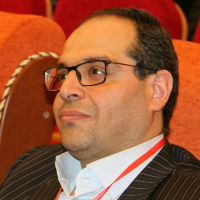Using weighted overlap method to model the physical development of Tabriz towards the North Tabriz fault in GIS environment
The role of spatial information and related technologies in risk management is well known around the world. A very important aspect of responding to hazards is to have spatial descriptive information about the current hazard situation in a timely, up-to-date and accurate manner to overcome an emergency. Iran is one of the earthquake-prone countries in the world. In the relative zoning of earthquake risk in Iran, the city of Tabriz is one of the most important cities in Iran, which is in the position of zoning with very high relative risk. The North Tabriz fault is located in the immediate vicinity of the city and in some areas the city has been built along this fault. This fault has been the source of devastating earthquakes throughout history and can once again turn the city into a ruin by reactivating itself. Over the past decades, the city of Tabriz has witnessed extensive physical development that has led to unsafe constructions in the presence of natural disasters (including earthquakes and only to meet the needs of housing in the short term). By identifying danger zones in the city, it is possible to decide on the location of vital arteries in low-risk areas. These areas can be identified using GIS techniques and remote sensing. Hazard zones based on fault line, slope, slope direction, geological structure, land use status and population density were investigated using weighted overlap method in GIS environment. The results showed that in the physical development of Tabriz, the risk will be more to residential areas and in the next category to commercial areas.
-
Forecasting the Demand of Medical Tourists in Yazd Using Artificial Neural Network
Hamidreza Fallah Tafti, Ahmad Esteghlal*, Seyed Ali Al-Modaresi, Zohreh Beheshtipour, Seyed Majid Mirhosseini
Management Strategies in Health System, -
Identifying, categorizing and ranking performance indicators of schools using Q method
Seyed Mahmoud Jalilian, Shahnaz Naibzadeh *, Seyyed Hasan Hataminasab, Seyed Ali Almodaresi
Journal of Management and educational perspective,


